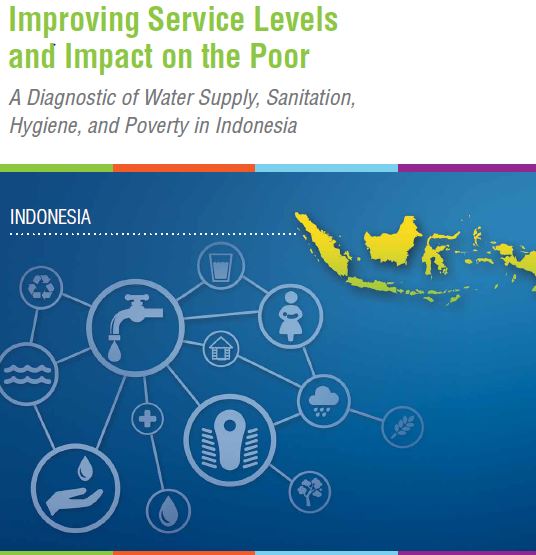Improving Service Levels and Impact on the Poor A Diagnostic of Water Supply, Sanitation, Hygiene, and Poverty in Indonesia
Indonesia is undergoing rapid urbanization, and although this can be accompanied by strong economic growth, it creates a number of challenges, including disparities in income and access to services. The urban population accounts for about half of the country’s total population, a figure estimated to rise to approximately 68 percent by 2025. Underinvestment in urban infrastructure and lack of adequate planning limits the potential economic growth and development benefits of growing cities and contributes to widening inequalities. Over the past decade, for every 1 percent increase in urbanization, Indonesia achieved only two percent gross domestic product (GDP) growth, below the return on urbanization in other Asian countries such as China, Vietnam, and Thailand, which have significantly benefited from economies of agglomeration. Unequal access to services at the beginning of life is a key driver of inequality. Children who are born into poverty are more likely to be deprived of critical services such as health care, nutrition, education, water supply, and sanitation—placing them at an unfair disadvantage from the outset. When accessible, these services help level the playing field for the next generation by providing the basic conditions that allow children and adults to lead healthier, and more educated and productive lives. Effective service delivery is essential to the future well-being of society, and is key to economic growth and prosperity. New evidence shows that owning a toilet, drinking clean water, and living in a community where most of one’s neighbors own a toilet are important drivers of child growth and cognitive development in Indonesia. Repeated exposure to fecal pathogens—especially common in areas where open defecation is practiced, fecal waste management is inadequate, and water quality is poor—can cause inadequate absorption and nutrient loss through diarrhea and poor gut function. These conditions stunt a child’s growth, causing irreversible impairment to development, learning, and earning—the effects of which extend over generations. Despite recent gains, many millions of Indonesians still go without improved water and sanitation. In Indonesia, 87 percent of the population has access to improved drinking water and 61 percent has access to improved sanitation, a 39 and 36 percentage point increase, respectively, since 1990. Although these gains are commendable, there are still close to 100 million people without improved sanitation and 33 million without improved drinking water, according to the WHO-UNICEF Joint Monitoring Programme for Water Supply and Sanitation (WHO and UNICEF 2015). These summary figures hide the persistent divides between urban and rural populations and among different income levels in access to services, and they mask underlying gaps in quality faced by all households, regardless of income or geographic location.
